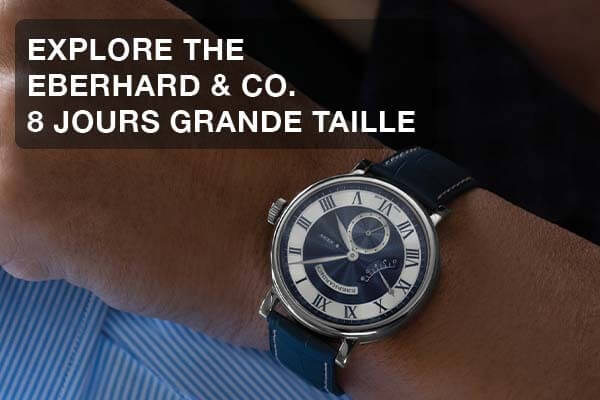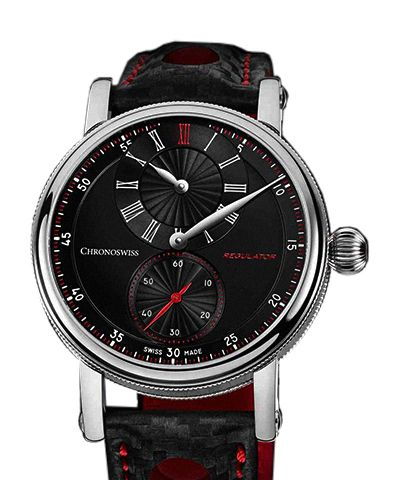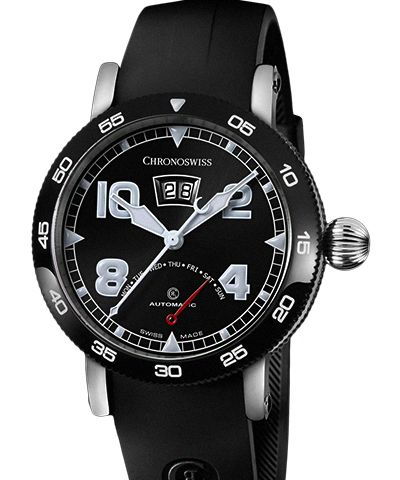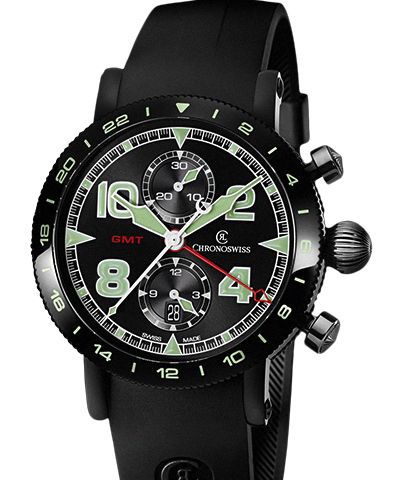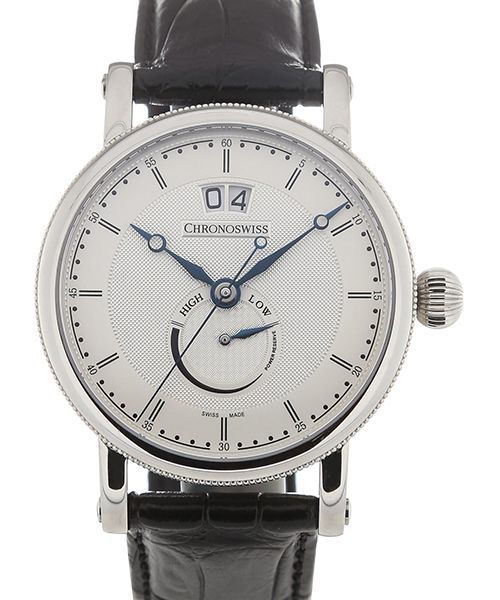
Chronoswiss
Chronoswiss stands for classic designs with modern accents. Most of all, the brand puts an emphasis on the fine details of a watch. With tangible passion, Chronoswiss follows watchmaking rules of symmetry and aesthetics and produces their guilloche and enamel dials fully inhouse. LEARN MOREFavorite Chronoswiss models:
Chronoswiss – Highest Swiss horology combined with German DNA
The name “Chronoswiss” may at first sound misleading for a watch manufacturer founded in Germany, as it undoubtedly includes the name of another country. The explanation for this, however, is as simple as it is obvious: company founder Gerd-Rüdiger Lang merely wanted to establish a connection to Switzerland, since 95% of the components used in his watches were originally sourced from Switzerland.
Lang, master watchmaker and former head behind the brand, learned horology in his German hometown Braunschweig and subsequently continued his studies in Würzburg in 1980 to become a master watchmaker. Lang’s appointment as master watchmaker was thus precisely at the height of the quartz crisis, a time in which the international watch industry was facing a historic upheaval and in which high-precision Japanese quartz movements increasingly took precedence over traditional mechanical watches. In the midst of the unrest, however, this courageous watchmaker took heart and decided to found a watch brand. A watch brand that exclusively produces pieces of the highest quality and a watch brand that was to resolutely oppose the quartz models with its automatic movements.
In 1981 Lang thus founded the “Special Workshop for Chronographs”, firmly convinced that there will always be a circle of enthusiasts who will prefer a mechanical watch. Two years later, in 1983, the foundation stone for today’s brand was laid with the Chronoswiss Uhrenfabrikation. The success should prove Lang right. Years of continuous expansion with international sales structures and world premieres of exceptional watches almost every year followed. Those premiers included among others the first hand-wound “Régulateur” in 1987 or the “Pathos”, a skeletonised double-hand chronograph in 1998. Also, Lang made sure his timepieces were always delivered with a personally signed certificate.
Over the years, certain design features have emerged that characterize Chronoswiss watches today: The best known is probably the iconic onion crown, which reminds a little of the Frauenkirche with its onion towers, which can be found in the company’s birthplace Munich. In addition, most of the watches have a fluted bezel with a ribbed surface which is a real optical highlight. The last design feature are the screwed bracelet bars, which can usually only be found on higher-priced watches and once again subtly underline the luxurious character of the brand. The brand is also able to carry out rare crafts such as enameling, guilloche or skeletonizing under its own roof. These rare crafts are nowadays rarely to be found and impressively prove that Chronoswiss is completely dedicated to traditional watchmaking.
In 2012, the Swiss entrepreneurial family Ebstein finally took over the brand from Lang and sealed the move from Germany to Lucerne in Switzerland, where Chronoswiss is still at home at Lake Lucerne. In the following year, the company celebrated its 30th anniversary and just one year later opened the “House of Chronoswiss”, a kind of mixture of museum, studio and boutique, which is open to curious watch lovers and attracts many visitors every year.
Chronoswiss Collections
Regulator
Regulator watches can be recognised as such at first glance. They are distinguished by the fact that seconds, minutes and hours are displayed separately and the minute hand is centrally adjusted, while the seconds and hours are displayed separately on sub-dials. Chronoswiss regulators are among the brand’s flagship products.
Sirius
This collection is named after the brightest star in the night sky, Sirius. Characteristic of these watches is their classic dress and a wide range of designs: Whether manual or automatic caliber, and a multitude of complications (perpetual calendar, moon phase, chronograph or date display), this collection really has something for everyone.
Timemaster
In contrast to the watches of the Regulator and Sirius series, the Timemaster watches have a sporty look. But the style of the 1940s should not deceive: Inside the watches, ultra-modern movements tick, making the Timemaster watches reliable and sporty companions.
Chronoswiss in Numbers
95: 95% of the parts are sourced from Switzerland
The brand sourced most of the parts during its founding days from Switzerland, which is reflected in the brand’s name.
1983: Foundation only in the early 80s
The Chronoswiss brand is undoubtedly one of the younger candidates in an international comparison of top watch brands, since the foundation stone was only laid in 1983.
18: Skeletonizing from the 18th century
Chronoswiss masters not only fire enamelling and guilloching but also the fine art of skeletonising, whose origins go back to the 18th century.
122: C.122
The Chronoswiss exclusive automatic movement, which comes from old Enicar stocks, is used for the first time in the Chronoswiss Régulateur.
7000: Around 7000 watches per year
500 authorized dealers around the world are supplied with approx. 7000 watches per year. This makes Chronoswiss watches rarities that are not often found in everyday life.
Chronoswiss: A Chronology
1958-1961: Gerd-Rüdiger Lang learns the art of watchmaking in his hometown Braunschweig.
1980: Lang finished the master school in Würzburg and founded a workshop specializing in chronographs in the following year, amidst the turmoil of the quartz crisis.
1983: Only a little later he establishes Chronoswiss watch production in Munich and officially registers the name as a trademark the following year.
1994: Launch of the “Grand Régulateur”.
2012: The owner family Lang sells its shares to the Swiss entrepreneurial family Ebstein based in Lucerne.
2013: Chronowiss celebrates its 30th anniversary and launches the Régulateur 30 in a limited edition.
2014: Opening of the “House of Chronoswiss” in Lucerne, where visitors can gain an insight into the manufactory and the in-house dial studio.
2017: Presentation of the Chronoswiss Flying Grand Regulator Skeleton, which attracts attention with its skeletonized and colored elements.






